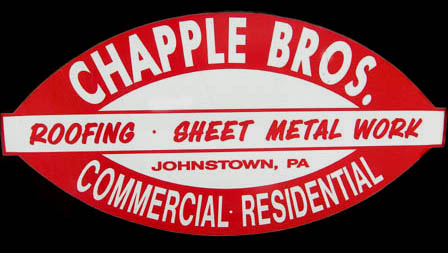
Roofing Terminology
(Click on a letter to learn more)
A
B
C
D
E
F
G
H
I
J
K
L
M
N
O
P
Q
R
S
T
U
V
W
X
Y
Z
Can't Strip
A beveled strip of wood or wood fiber that fits into the angle formed by the intersection of a horizontal surface and a vertical surface. The 45-degree slope of the exposed surface of the cant strip provides a gradual angular transition from the horizontal surface to the vertical surface.
Cap Sheet
A granule-surfaced coated sheet used as the top ply of a built-up roof membrane or flashing.
Caulking
A granule-surfaced coated sheet used as the top ply of a built-up roof membrane or flashing.
Chlorosulfonated Polyethylene (CSPE or CSM)
A synthetic, rubber like thermoset material, based upon high molecular weight polyethylene with suphonyl chloride, usually formulated to produce a self vulcanizing membrane.
Coal Tar Bitumen
A dark brown to black, semi-solid hydrocarbon formed as a residue from the partial evaporation or distillation of coal tar. It is used as the waterproofing agent in dead-level or low-slop built-up roofs. It differs from coal tar pitch in having a lower front-end volatility.
Coal Tar Pitch
A dark brown to black, semi-solid hydrocarbon formed as a residue from the partial evaporation or distillation of coal tar. It is used as the waterproofing agent in dead-level or low-slope built-up roofs.
Coated Base Sheet
A felt that has been impregnated and saturated with (or felt) asphalt and then coated on both sides with harder, more viscous asphalt to increase its impermeability to moisture; a parting agent is incorporated to prevent the material from sticking to the roll.
Cold Process
A continuous, semi-flexible roof membrane, consisting Roofing: of plies of felts, mats or fabrics that are laminated on a roof with alternate layers of cold-applied roof cement and surfaced with a cold-applied coating.
Condensation
The conversion of water vapor or other gas to liquid as the temperature drops or the atmospheric pressure rises.
Coping
The covering piece placed on top of a wall that is exposed to the weather. It is usually sloped to shed water.
Counter Flashing
Formed metal or elastomeric sheeting secured on or into a wall, curb, pipe, rooftop unit or other surface to cover and protect the upper edge of a base flashing and its associated fasteners.
Course
The term used for each application of material that form the waterproofing system or the flashing; one layer of a series of materials applied to a surface.
Coverage
The surface (in square feet) to be continuously coated by a specific roofing material, with allowance made for a specific lap.
Crack
A separation or fracture occurring in a roof membrane or roof deck generally caused by thermally induced stress or substrate movement.
Creep
The permanent deformation of a roofing material of roof system caused by the movement of the roof membrane that results from continuous thermal stress or loading.
Cricket
A superimposed construction placed in a roof area to assist drainage.
Curb
A raised member used to support roof penetrations, such as skylights, mechanical equipment, hatches, etc. above the level of the roof surface.
Cutback
Any bituminous roofing material that has been solvent thinned. Cutbacks are used in cold-process roofing adhesives, flashing cements, and roof coating.
Cutoff
A material seal that is designed to prevent lateral water movement into the edge of a roof system where the membrane terminate at the end of day's work or used to isolate section of the roof system. Cutoffs are usually removed before the continuation of work.

Back to Chapple Brothers Main Page


